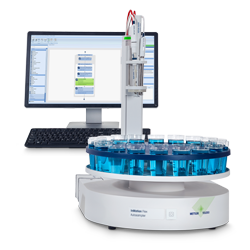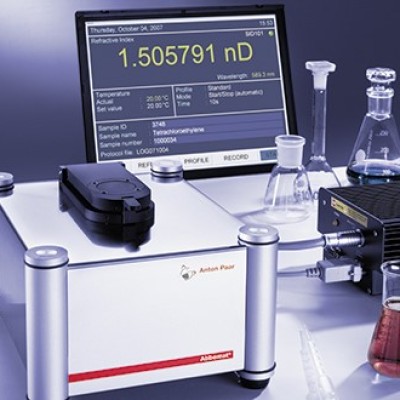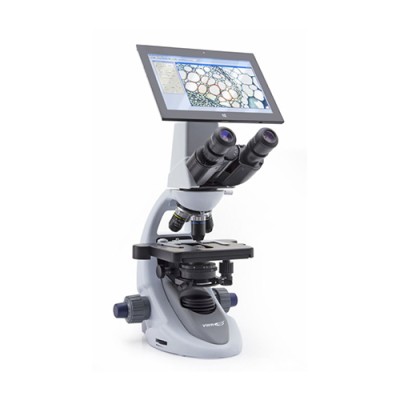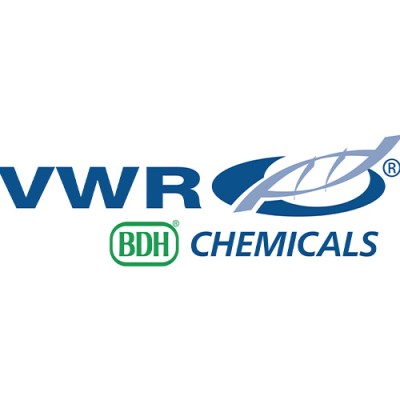
Gaz Chromatography
Gas chromatography is the method used to separate and analyze gaseous or easily volatile components in a mixture. Completing the process in a short time and very sensitively reveals the superiority of the method.
Chromatographic separation occurs by the distribution and interaction of the material between the two phases. There are two phases in gas chromatography: "Stationary Phase" and "Carrier Phase".
A gas chromatography system; It consists of 6 parts: “The part that adjusts the entraining gas, pressure and flow”, “Sample injecting part”, “Column part”, “Heating part”, “Detector part”, “Recording part”.
Scope of application
Due to reasons such as being able to separate very complex samples including isomers into their components, getting fast and accurate results, requiring less samples and being sensitive;
- Chemical
- Biochemistry
- Petrochemical
- Forensic Medicine
- Pharmacology
- Genetics
- Food
It is the most widely used method.
Advantages of Gas Chromatography
- Being reliable
- Ability to work with a small amount of samples
- It can provide effective and high separation
- Simple and inexpensiveGaz Kromatografisi ile Gıdaların Analizi
Separation, diagnosis and observation of chemical substances are very important in terms of regulating production in the food and flavor industry.
Sulfite, which is known as a preservative in fresh vegetables and fruits, can be analyzed by gas chromatography due to its potential poison.
Gas Chromatography Systems
Agilent's Gas Chromatography systems add new prospects to new labs by increasing analytical performance, reducing costs and saving capital investment expenditures.
Gas Chromatography Detectors
Agilent's gas chromatography detectors can dramatically increase your ability to find compounds in a matrix. Choose from a range of GC detectors, including flame ionization detectors (FID), thermal conductivity detectors (TCD), and electron capture detectors (ECD).
Gas Chromatography Analyzer
Agilent's GC Analyzer portfolio can combine multiple methods with proven results in a single system, dramatically reducing the time from system arrival to final calibration and verification.
Gas Chromatography Technologies
Our Capillary Flow Technology (CFT) instruments, flow modulators, and other advanced GC and GC/MS technologies provide precise flow distribution for reflux and GCxGC analytical techniques in simple column chambers.
Sample Preparation
Agilent's GC sample entry systems increase the efficiency, performance and flexibility of your gas chromatography systems. Our GC autosamplers provide the ability to perform automated sample preparation procedures, from simple dilution to complex derivatizations.
HPLC
HPLC (High Performance Liquid Chromatography) High Performance Liquid Chromatography is called HPLC for short. High performance means high resolution (discrimination).
The HPLC device is the most widely used device for analytical separation techniques. It uses liquid mobile phase to separate components in a mixture. These components are first dissolved in the solvent and then forced through the chromatography column under high pressure. Common reasons for use include; sensitivity, being easily adaptable to quantitative determinations, suitability for separation of non-volatile or easily degradable compounds with temperature. The most important thing is its wide applicability to substances of primary concern to many branches of industry and society. Examples of such compounds are amino acids, proteins, nucleic acids, carbohydrates, drugs and pesticides.
High pressure liquid chromatography is widely used in food and beverage industry, environmental engineering subjects, medicine, petrochemistry, agriculture, consumer goods, industrial chemistry, pharmacology, etc. It is used in a wide variety of fields for chemical separation, purification, detection and quantification.
Avantages of UHPLC
- Small size stainless steel columns can be used,
- Using columns with very small particle sizes,
- Providing high internal pressure and controlled flow rate,
- Less sample requirements,
- Allowing the determination of small quantities with continuous flow detectors,
- Fast analysis and high separation power,
- Analysis time is short.
HPLC Application Areas
- Medications: Antibiotics, sedatives, steroids, analgesics
- Biochemicals: Amino acids, carbohydrates, proteins, lipids
- Food Ingredients: Artificial sweeteners, antioxidants, alphatoxins
- Industrial Chemicals: Polycyclic aromatics, dyes, surfactants
- Contaminants: Pesticides, herbicides, phenols
- Drugs: Narcotic drugs, poisons, narcotics
- Clinical Medicine: Bile acids, drug metabolites, urea extracts, etc.
Parts of HPLC
- Mobile phase reservoir
- Pump
- Injector
- Colon
- Detector
- Software
Separation takes place in the colon. The stationary phase consists of μm size particles, so high pressure pumps are needed to pass the mobile phase through the column.
The chromatographic process begins with the injection of the sample into the column.
Separation of components continues by pumping the analyte and mobile phase into the column.
The peaks of each component obtained by separating are recorded.
The detector response received for each component is displayed as a chromatogram on a recorder or computer screen.
ICP
ICP-MS consists of two units, Inductively Coupled Plasma (ICP) and Mass Spectrometer (MS). After the elements in the sample are ionized in the ICP, they are sent to mass spectroscopy (MS) where they are separated and measured according to their mass/charge (m/z) ratio.
Application areas
- Weapons Industry (Bullet Wastes, Substance Characterization, Poisons)
- Food
- Environment (Drinking Water, Sea Water, Waste Water, Solid Wastes, Soil, Sludge)
- Clinic (Blood, Hair, Urine)
- Geology (Soil, Rock)
MP-AES Systems
Agilent's industry-leading microwave plasma atomic emission spectrometry (MP-AES) systems are a powerful, cost-effective and easy-to-use system for a wide variety of applications, from routine analysis to complex precious metal analysis.
ICP-OES Systems
Agilent ICP-OES system provides industry-leading performance, speed and ease of use. In the water and environmental chemistry laboratory, metal analysis can be performed for drinking water, waste water and sea water treatment sludge with the ICP-OES Device.
ICP-MS Systems
Agilent ICP-MS systems use innovative technology to provide excellent precision, accuracy, ease of use and productivity.
NIR
Flash Choromatography
Prep HPLC
Kjeldahl Systems
Extraction Systems
Spray Drying & Encapsulation Products
Rotary Evaporatory Syatems
- Laboratory Evaporation Products
- Industrial Evaporation Products
- Parallel Evaporation Products




